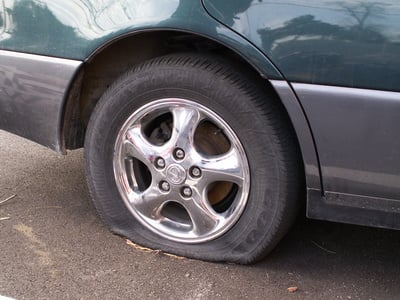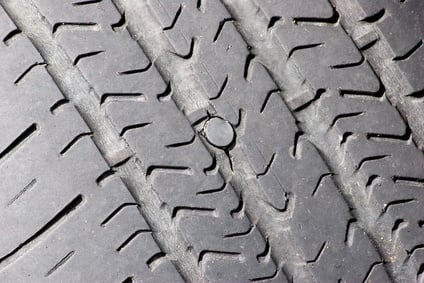Written on Dec 27, 2011 2:35:00 PM
Tire Inspection Can Prevent Car Accidents!
Topics: auto accident, tire blowout, tire failure
 As you are driving down the road, you feel one side of your vehicle beginning to thump and you hear a sound characteristic of your tire rapidly losing air. If you are driving down an interstate (Like I-75 or the Veterans Expressway) at cruising speed, this can be dangerous, leading to a potentially serious car accident.
As you are driving down the road, you feel one side of your vehicle beginning to thump and you hear a sound characteristic of your tire rapidly losing air. If you are driving down an interstate (Like I-75 or the Veterans Expressway) at cruising speed, this can be dangerous, leading to a potentially serious car accident.
Tire Blowout and Car Accident Statistics
Car accidents involving tire blowouts was about 5.9 percent in 2002, according to the National Highway Traffic Safety Administration. When these tire failures took place on highways or interstates, rear-tire failures took place four times as often as for front tires. Vans were more likely to experience a catastrophic blowout and subsequent car accident than were other types of vehicles. Van tire blowouts took place at a rate of 22 percent. For trucks, this percentage drops to 2.5 percent. Two situations contribute to rear-tire failures, including the poor condition of tires on the backs of vehicles involved in car accidents. It is easier to maintain control of a vehicle that has just experienced a blown-out tire if that vehicle is a four-wheel drive rather than a two-wheel drive.
Kinds of Injuries that Result From Highway Tire Blowouts
When your vehicle tire fails and blows out on the freeway, you are more likely to be buckled into your seat because of federal laws on safety belt use. At the moment your vehicle loses control and either hits an immovable object or rolls over, your body is subjected to strong momentum, which can lead to serious injuries as a result of your vehicle’s movement and the safety belt holding you in the vehicle.
In addition to broken bones and internal injuries, passengers can suffer severe cuts after their vehicle becomes involved in a car accident resulting from a tire blowout. When a side window or windshield breaks, some of the cuts can require stitches.
Preventing a Catastrophic Blowout
 Prevention is the best defense against a blown-out tire and car accident. Before you leave for your destination, have a general route pre-planned so you avoid any construction areas. You are at higher risk of picking up a nail when you drive through an area of construction activity. Other areas to avoid include very rough roads, especially if your tires are not new and the tread is beginning to show wear. Rough roads can cause weak tires to blow or flatten.
Prevention is the best defense against a blown-out tire and car accident. Before you leave for your destination, have a general route pre-planned so you avoid any construction areas. You are at higher risk of picking up a nail when you drive through an area of construction activity. Other areas to avoid include very rough roads, especially if your tires are not new and the tread is beginning to show wear. Rough roads can cause weak tires to blow or flatten.
Make it a regular practice to inspect your tires on a weekly or bi-weekly basis. Look for an irregular sidewall, checking for dents, bumps or weakened areas on the tires. Check for dry rot, which looks like tiny cracks in the sidewall area of your tires. Any weakened areas, no matter how small, can increase the risk of a flat, a blowout or a car accident.
Check the pressure of your tires, using a tire gauge so you can avoid an unneeded car accident. Know what the ideal tire pressure is for your tires and vehicle. If your tire pressure is low, visit a service station and add air to your tires, then check the pressure once again to ensure it is correct in all four tires.
If you have no choice but to drive through a construction zone, inspect each tire closely, looking for any nails protruding from the sidewall or treads. If you spot a nail, your next stop should be a tire store for tire repair and prevention of a car accident.

